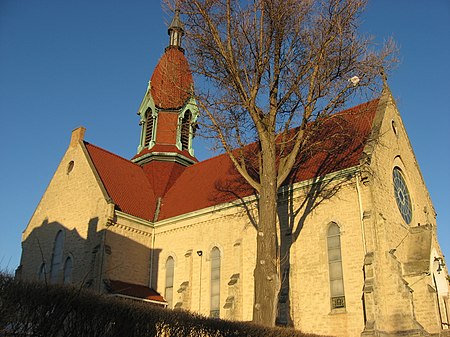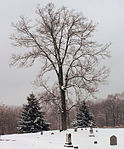St. Pius X Catholic Church (Cincinnati, Ohio)
Churches on the National Register of Historic Places in OhioHamilton County, Ohio Registered Historic Place stubsNational Register of Historic Places in CincinnatiOhio church stubsRoman Catholic churches in Cincinnati ... and 1 more
Romanesque Revival church buildings in Ohio

St. Pius X Catholic Church is a registered historic building in Cincinnati, Ohio, listed in the National Register on December 4, 1978. Located along Blue Rock Street, it was dedicated in 1879 to St. Patrick, and then in 1991 was dedicated to Pope Pius X by the Society of St. Pius X. Beginning in 2015, the building now houses a brewery, Urban Artifact.
Excerpt from the Wikipedia article St. Pius X Catholic Church (Cincinnati, Ohio) (License: CC BY-SA 3.0, Authors, Images).St. Pius X Catholic Church (Cincinnati, Ohio)
Blue Rock Street, Cincinnati Northside
Geographical coordinates (GPS) Address Nearby Places Show on map
Geographical coordinates (GPS)
| Latitude | Longitude |
|---|---|
| N 39.160444444444 ° | E -84.542419444444 ° |
Address
Fire Station 20 (Number 20 Engine House;Cincinnati Fire Department Engine and Truck 20;Cincinnati Fire Department Station 20)
Blue Rock Street 1668
45223 Cincinnati, Northside
Ohio, United States
Open on Google Maps









